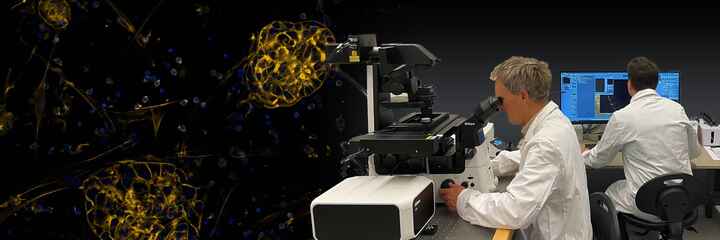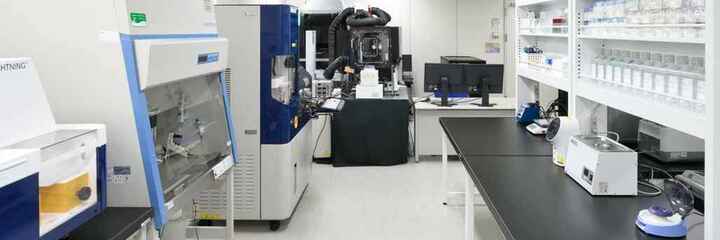News
Nikon Casts a New Light on Research
Nov 5, 2003
Nikon's New Epi-Fluorescence Module Provides Improved Fluorescence Imaging for Cutting-Edge Research
Nikon Instruments Inc., a world leader in precision optics manufacturing, today announced the introduction of its new Universal Epi-Fluorescence Reflected Light Illuminator Module for Nikon Eclipse upright microscope models, including the E600, E600FN, L150, L150A, ME600L. This Universal Epi Illuminator provides superior fluorescence imaging for cutting-edge scientific research and supports all types of reflected light illumination techniques for opaque materials science, semi-conductor and metallurgical samples.
The Universal Epi-Fluorescence Module now incorporates a high precision turret to hold up to six (6) easily interchangeable reflector blocks for multiple fluorescence illumination wavelengths as well as standard reflected light techniques, such as reflected brightfield, darkfield, and DIC. This feature allows the user to utilize a variety of probes at different wavelengths on multiple stained specimens. Additionally, Nikon's proprietary optional excitation balancer allows the user to continuously change the excitation wavelength and decide which color to emphasize during imaging of multi-stained samples. The Illuminator's unique phosphorescent filter block identification labels allow for effortless operation in dark rooms. Phosphorescent markings indicate all of the filter wavelength specifications, ensuring easy identification of the filter name and turret position index. The innovative, new Noise Terminator feature significantly improves the S/N ratio, blocking stray light from entering the imaging light path and adversely affecting the image. The unit features removable and centerable field and aperture diaphragms as well as several neutral density filters to provide complete control of the illumination to the specimen being observed.
"The Universal Epi-Fluorescence Illuminator Module takes scientific research to the highest performance levels," said Stan Schwartz, Nikon Instruments' Division Manager of Microscopy Product Marketing. "The extremely high levels of brightness and contrast, coupled with the ability to utilize a number of observation methods, allow both materials science and bioscience researchers to view specimens with unprecedented clarity and efficiency."
By combining the capabilities of both high-performance fluorescence observation modes with traditional reflected light modes, microscopy of "Bio-Materials" is now easily possible on one microscope platform. In addition, it is perfect for any microscopy research involving metal, organic or inorganic materials, environmental analysis, or micromechanics (MEMS or BIOMEMS). The Universal Epi-Fluorescence Module is versatile enough to be used with a number of Epi-reflected observation methods, including fluorescence, brightfield, darkfield, differential interference contrast, and simple polarizing techniques, separately or simultaneously with transmitted light microscopy imaging modes.



